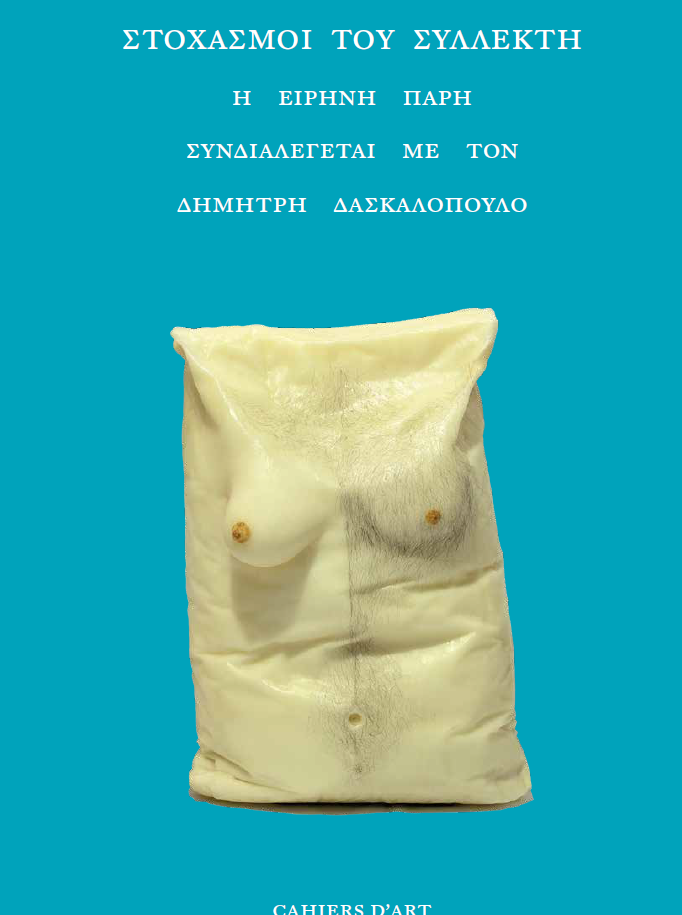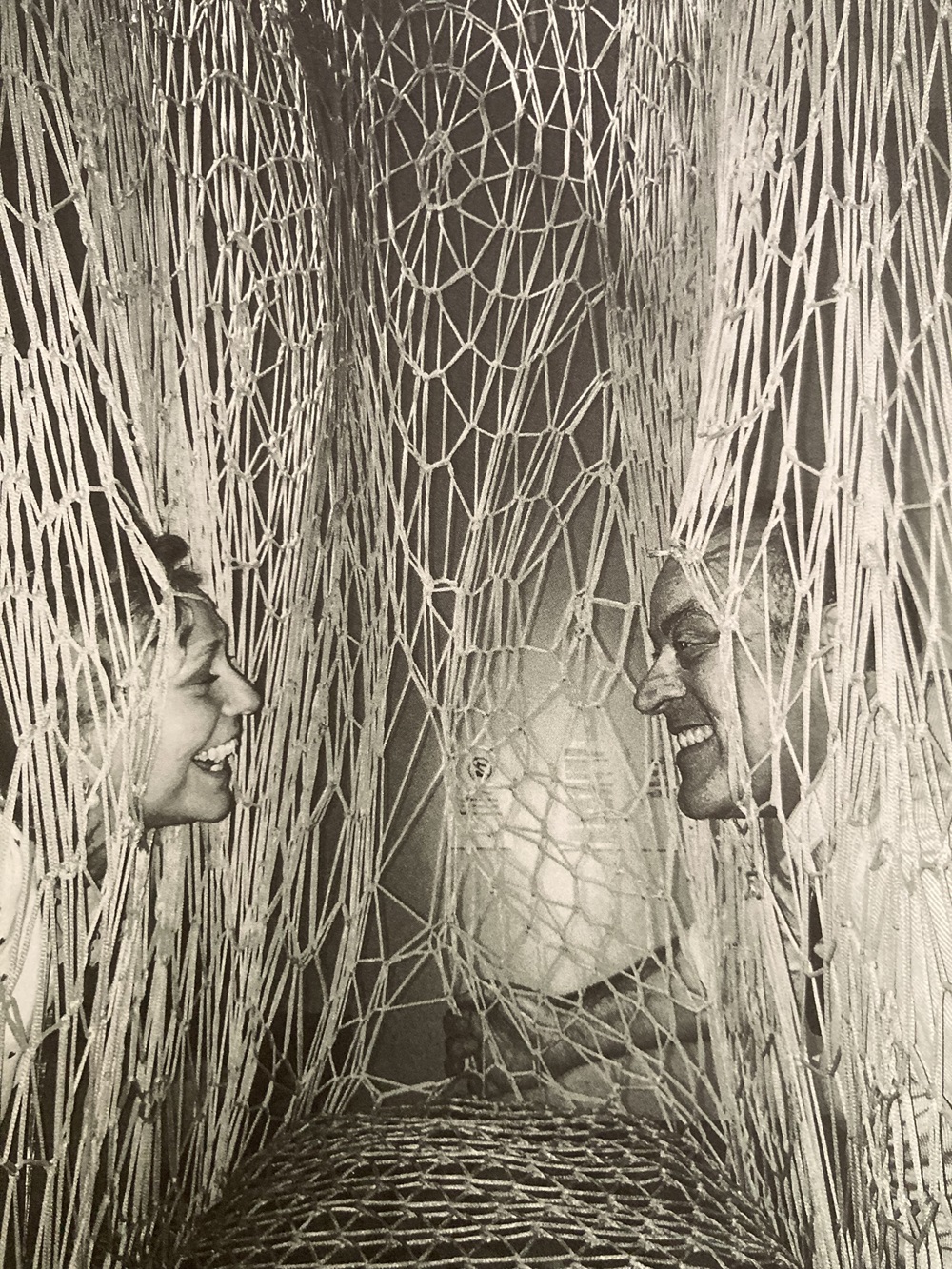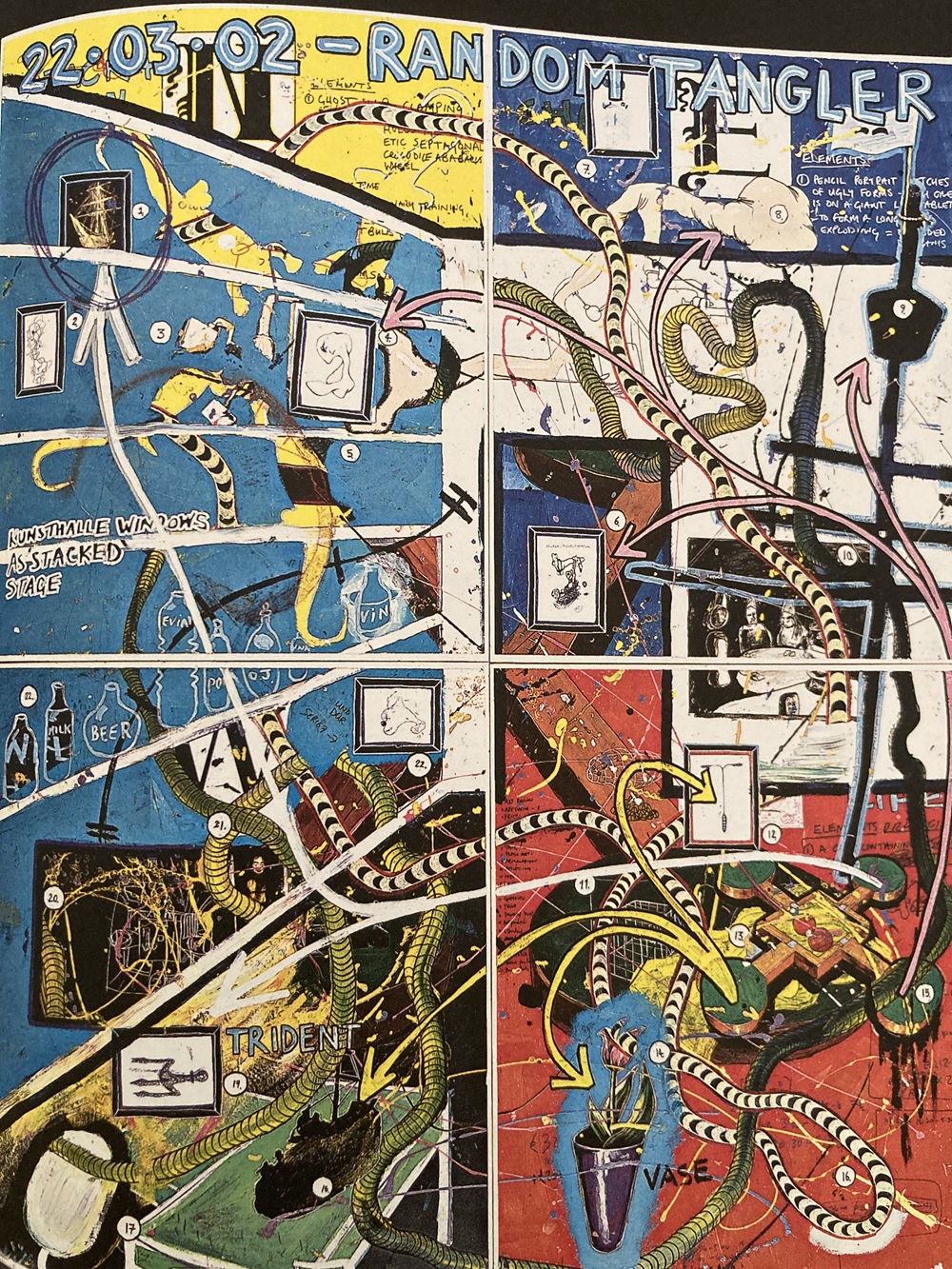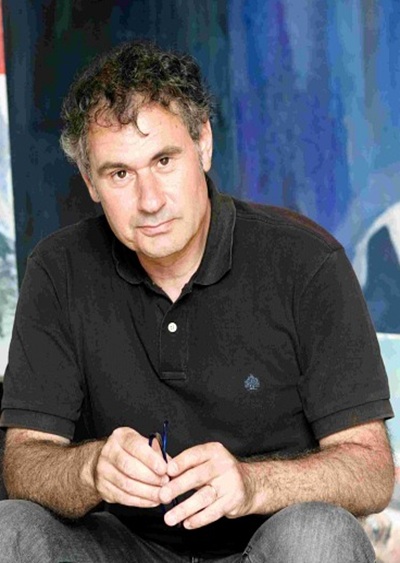
Title: Contemplations of a Collector: Irini Pari in Conversation with Dimitris Daskalopoulos
Author: Irini Pari
Publishing House: Cahiers D’Art
Subject: Scrapbook
Year: 2024
Pages: 300
Technical Features: 29×21
…to the extent that any of us are moved and undergo a change of heart when confronted with art, we all become re-creators and therefore richer.
The book Contemplations of a Collector is a work of art both in form and especially in content. It is the fruit of a three-year creative dialogue between its author, Irini Pari, and her collector and life companion, Dimitris Daskalopoulos. The book is published by Cahiers d’Art, a publishing house with Greek roots.
The author has dedicated her professional career to promoting the ideal of the European Union, defending entrepreneurship and building consensus. The collector Dimitris Daskalopoulos, known for his highly successful career as an entrepreneur, president of SEV etc., but also for the creation of the NEON Organisation, the research organisation DIANEOSIS as bodies of active political action. He is the donor of a collection of immense value to 4 world-class contemporary art museums. In this publication he presents the hard core of his collection, some 100 works, by the artists who inspired him. He clearly distinguishes the criteria for selecting these works from the actions that characterize NEON’s selections as being of non-political value .

Irini Pari and Dimitris Daskalopoulos pose next to Ernesto Neto’s work, “Velejando Entre Nos”, 2013.
The publication is introduced by Nicholas Serota, art historian and curatorial director of Tate 1988-2017 and chairman of Arts Council Eng long since 2017. He refers to Dimitris Daskalopoulos’s sponsorship ‘as a form of active support that is unmatched by any other collector past or present‘. The donation includes 350 works and 142 artists. 140 were offered to the EMST in Athens, 110 to the Tate Gallery of Modern Art and 100 each in co-ownership at the Guggenheim in New York and the Museum of Modern Art in Chicago. The works were collected during the 1980s-1990s. According to the curator, the collection “lays the foundation for an emerging generation of art historical curators and artists.”
The collector Dimitris Daskalopoulos defines the concept of collecting as his own conceptual milestone… “It is an act of exploration, an examination of ideas and concepts expressed by artists in visual and physical terms…the discovery of unexpected correlations between works of art and the deepening of the understanding of human existence“.
The works began to be collected in 1993.Those that attracted his interest were works that explored an idea or an emotion. He is not so much interested in those that respond to specific political events or social issues, but rather those that offer a more universal and timeless understanding of human suffering.

Marcel Duchamp, “Fontaine”, 1917/1964
It is also important for the collector that the works are exhibited in a hitherto unexpected way and that they converse with each other, supporting the aim of the exhibition through a unique dialogue.
Referring to the basic idea that was the cornerstone of his existential quest, he refers to Kazantzakis “as soon as we are born, begins the effort to create, to compose, to make matter life, every single moment we are born“. (Ascesis/ The Saviors of God). He treats the body “not as a body, but as a source of creativity and the vessel of existential, social and ideological struggle“.
The basic content of this book, which is structured in the context of a series of conversations between Dimitris Daskalopoulos and Irini Pari “giving it a victorious, intimate stigma, similar to the one that governs the ancient Greek texts … a unique book… presented in the light of art and love … is dedicated to encouraging social progress by inspiring individual citizens to think and act through the compelling paradigm of art,” says Madeleine Grynsztein Director of the Pritzker Museum of Contemporary Art Chicago in her introductory note.
In the inventive structure of the publication, the collector develops the works – influences that led him to the specific conception of the collecting act. It is distinct from ordinary collections because the works follow his own “thrill” from the moment of their introduction to him, without regard to any kind of financial investment. That is why the magnificent act of donation became an action that gave new life to the works through their conversation with other collections in some of the world’s greatest museums. Moreover, it provided them with a lifespan beyond that of the collector and for our country it was a move of unprecedented cultural diplomacy.

Keith Tyson,”Working Drawing for Random Tangler”, 2002
The collector recognizes the minimal possibilities that a Greek contemporary artist would normally have to stand out on his own on the international scene. He states, however, that although he has included 65 Greek artists and over 80 works in his collection, his only criterion was the work itself and how well it fit the criteria of the collection.
How could it be otherwise, since he characterizes his collection as deeply Greek-centric. This is of course because at its centre is Man as well as the whole of ancient Greek philosophy.
The book is ingeniously structured. The play with fonts, colours, the unexpectedly structured paragraphs leading to a clever visual hunt, enlightens us above all about the great and important messages that the collector, in a profound spiritual companionship with his life partner Irini Pari, reveals to us through the works themselves. Concepts such as universe, light, finite, life, death, man, creativity, fragility, sensitivity, individual freedom, society, temptation, social convention, barbarity, are understood through the works of art of the collection that the book introduces to us.
This volume presents works by Jota Castro, Bob και Roberta Smith, Ana Mendieta, Rebecca Horn, Marcel Duchamp, Hans Belimer, Robert Morris ,Joseph Beuys, Mark Rothko, Bruce Nauman, David Hammons, Robert Gober, Christoph Buchel, Damien Hirst, Alina Szapoeznikow, Mark Bradfdord, Cildo Meireles, Paul McCarthy, Antony Gompley, Mona Hatoum, Terry Adkins, Fischil & Weiss, Bill Viola, Louise Bourgeois, Marina Abramovic ,Damien Hirst, Jenny Holzer ,John Bock, Matthew Barney ,Keith Tyson, Mike Kelley, Stathis Logothetis , Kiki Smith, Sarah Lucas ,Jim Hodges, Robert Gober, Paul Mc Carthy, Barbara Kruger, Gilbert &George, Mutu Wagechi ,Kendell Geers, Kutlug Ataman ,Phyllida Barlow, Alexis Akrithakis, Mark Dion & Robert Williams, Thomas Hirschhorn, Vlassis Kaniaris, Nikos Kessanlis , Despina Isaia, Alexandros Psychoulis ,Adrian Villan Rojas,Doris Salcedo,Ghada Amer,Walid Raad,Martin Kippenhenger, John Bock,Tom friedman,Mike Kelley, Angelos Papadimitriou ,Bruce Conner,Pier Paolo Calzolari,Doris Salcedo. Since 2016 Dimitris Daskalopoulos has stopped collecting. He believes that a collection must end if it has something to say, when it says it.

Paul McCarthy, “Tomato Head (Burgundy)”,1994
The collector gives us his own perspective on fundamental questions of human existence: “I have always had the reflection in my life, how much we are responsible for our development, how much luck counts and how much skill, effort. What is destined and what do you create?” It does not answer the question.
The role of society in individual effort and the limits of vanity “But it is this effort that adds up and builds the social achievement, progress, conquests, institutions, rules, which in turn have vanity in the sense that they are evolved by subsequent people, changing and adapting to the conditions of their time“.
On the dark side of man “And that is why my collection avoids highlighting the ugly side of man because I believe in the natural tendency towards effort and optimism, instead of abandonment and nihilism“.
On Murder, “Although no one considers, at the moment of killing, that he is doing an act of empty content. He thinks he is fighting for a great idea, that he is defending the sacred, that he is killing for justice. But the cost in lives is unjustifiable.”
On love “For me, in my life, it has been extremely important and even more so, and especially with you, dear lady, where I turned my life upside down for love. But rather ….it is not a building block of man. It is, I would say, a blessed chemical reaction”.
The publication concludes with “a poem-work of art” that Mrs. Irini Pari gifts to her significant other and companion of her heart Mr. Dimitris Daskalopoulos, leaving in her turn a trace of the history of creative encounters, so rare in this world!







Leave A Comment